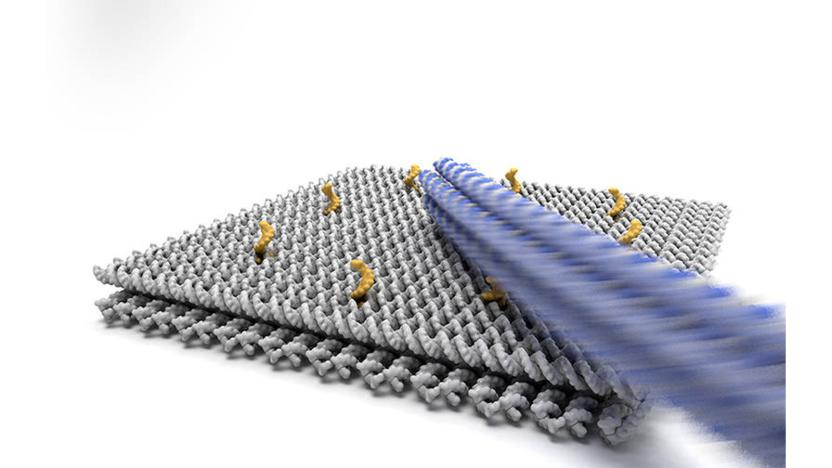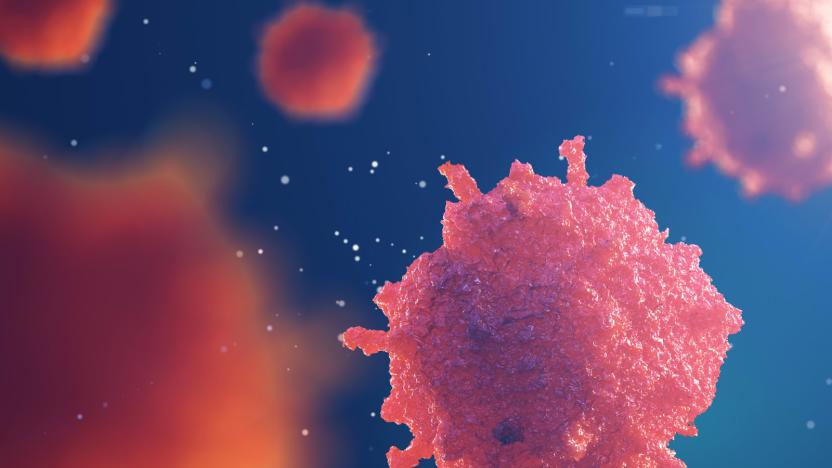nanorobotics
Latest

Speedy DNA nanorobot could lead to molecular factories
DNA-based robots promise all kinds of microscopic machinery, but there's a major obstacle: they're slow. Existing designs that use biochemical processes for movement can take hours to shuffle molecules around, which makes them utterly impractical for anything time sensitive. That might not a hurdle for much longer. Scientists have developed a DNA nanorobot (specifically, an arm) that uses electric fields to move a whopping 100,000 times faster than previous examples, even though it's based on straightforward concepts.

Algae-based nanobots could diagnose you from the inside
Nanobots promise a breakthrough in medicine by letting doctors study and treat you without invasive surgery or relatively ineffective drugs. But they face a couple of key problems: it's not easy to steer them to where they're needed, and getting rid of them is difficult when they're finished. Researchers might have a solution: make them out of natural materials that are guaranteed to break down. They've crafted nanobots (not pictured) using the sort of spirulina algae you can find in health food stores. The natural composition not only lets them biodegrade gracefully, but makes them relatively easy to control and track.

Georgia Tech models swimming, cargo-carrying nanobots
The nanobot war is escalating. Not content to let Penn State's nanospiders win the day, Georgia Tech has answered back with a noticeably less creepy blood-swimming robot model of its own, whose look is more that of a fish than any arachnid this time around. It still uses material changes to exert movement -- here exposing hydrogels to electricity, heat, light or magnetism -- but Georgia Tech's method steers the 10-micron trooper to its destination through far more innocuous-sounding flaps. Researchers' goals are still as benign as ever, with the goal either to deliver drugs or to build minuscule structures piece-by-piece. The catch is that rather important mention of a "model" from earlier: Georgia Tech only has a scientifically viable design to work from and needs someone to build it. Should someone step up, there's a world of potential from schools of tiny swimmers targeting exactly what ails us.

Researchers power microbots made of bubbles with lasers
They may not be "robots" as most have come to expect, but these so-called microrobots developed by a team of researchers from the University of Hawaii at Manoa do have at least one thing in common with many of their mechanical counterparts: lasers. As IEEE Spectrum reports, the bots themselves are actually nothing more than bubbles of air in a saline solution, but they become "microrobots" when the laser is added to the equation, which serves as an engine of sorts and allows the researchers to control both the speed and direction of the bubbles. That, they say, could allow the bots to be used for a variety of tasks, including assembling microstructures and then disappearing without a trace when the bubble is popped. Head on past the break for a video of what they're already capable of.

Microbot controls swarm of bacteria, puts all flea circuses to shame
Sylvain Martel, what hast thou sown? The director of the NanoRobotics Laboratory at the École Polytechnique de Montréal this week is presenting his latest microbot at ICRA in Japan, and it's got a pretty crazy trick. The solar panel-equipped device sizes up to about 300 x 300 microns, and using a sensor to detect nearby pH levels, it's been shown as capable of controlling a swarm of 3,000 bacteria using electromagnetic pulses. Sure, Martel suggests there'll be some eventual medical uses for the technology, but we'd be lying if we said the video demonstration didn't give us the willies. See for yourself in the video linked below. Read - Announcement Read - Video

